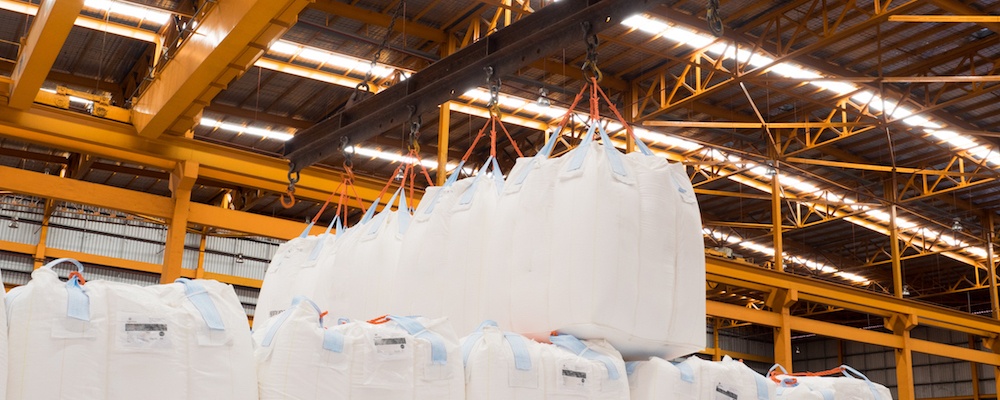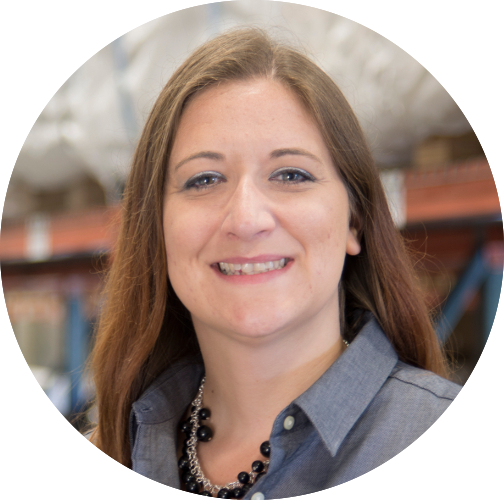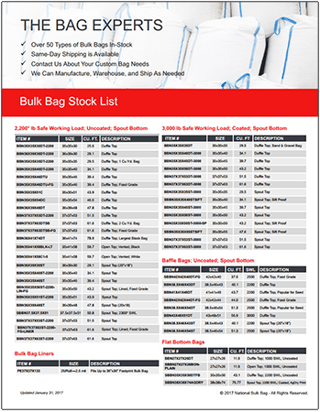As a supplier of Flexible Intermediate Bulk Containers, also known as bulk bags, we get a lot of questions about bag construction and how to choose the right bag. Our job as bag experts is to make sure our customers have the right bag for their product and their application. The type of bag that’s best for the job all depends on what kind of materials are being stored and/or transported.
One of the more common lines of questioning we get at National Bulk Bag is about coated bags. What is coating? What are the uses and benefits of a coated bag? Do I need a coated bag? Let’s examine the differences between Uncoated and Coated bags as well as outline common uses for both types of bags.
Don’t forget to subscribe to our blog by filling out the subscribe to our blog form to the right.
What is an “uncoated” FIBC?
Flexible Intermediate Bulk Containers are typically constructed by weaving together strands of polypropylene. Because of the weaved construction, materials that are very fine may seep through the weave or sew lines. Examples of these products include fine sands or powders.
If you’re packing a powder in an uncoated bag and you hit the side of a full bag, you might see a cloud of product leave the bag. For some applications, this is perfectly fine. For others, it’s not. The weave of an uncoated bag also allows air and moisture to more easily pass through the polyethylene to the product you’re packing.
Common uses for uncoated bags:
- For transporting/storing specific types of food grade and non-food grade products.
- For transporting/sorting any product that is granular and is the size of grains of rice or larger such as beans, grain, popcorn, and seed.
- Transporting products/goods that need to breathe.
What is a “coated” FIBC?
A “coated” bag is constructed similarly to an uncoated bag; however, before the bag is sewn together, an additional polypropylene film is added to the bag’s fabric sealing the small gaps in the poly weaves. This film can be added to the inside or outside of the bag.
Inside the bag is the most common because it can keep products like powders from getting stuck in the weave when discharged. The coating can be difficult to detect if you’re not very familiar with flexible intermediate bulk containers. The easiest way to tell if a fabric is coated is to press the weave together to see if it spreads apart. Make sure to test both the outside and inside of the bag. If the weave does not spread apart, there’s a good chance the bag is coated.
Benefits of a coated bags
One of the benefits of a coated bag is the additional protection it offers the materials being stored and/or transported. Flexible intermediate bulk containers can be found in warehouses, construction sites, and manufacturing facilities. These are environments where outside contaminants like dust, moisture, and dirt can be a factor. The coating on a bag can provide a moisture barrier and an added layer of protection. If you are packing a powder and you hit the side of the bag when it’s full, you will not likely see a cloud of product exit the bag like an uncoated bag. Coated bags are very useful when packing small granular or powdered product.
Common uses for coated bags:
- When a barrier from water/moisture is needed.
- When you’re transporting dry flowable products in powder, crystal, granule or flake form such as cement, detergents, flour, salt, fine minerals such as carbon black, sand and sugar that need moisture protection.
- At times, a poly liner may be used along with a coated bag to add an extra layer of protection.
When coated bulk bags are not enough
Coating only acts as a moisture barrier. Coating will not keep liquid out, and it will not keep liquid in.
Some granular products and powders are so fine that they may require additional features like sift proof seams, which keep the product from coming out of the sew holes. This adds a premium to the price, but will provide an added layer of protection that the product will not escape from the bag.
For many products, coating and sift proof seams are not enough. In those cases, we would recommend a bag with a polyethylene liner. Powdered sugar is a good example of a product that frequently uses these types of bags with liners. See our page on bag liners by clicking the link below:
Click here to view bag liners.
Thanks for reading!
 Thanks for visiting the National Bulk Bag blog! We hope you found this blog post on uncoated and coated bags helpful and informative.
Thanks for visiting the National Bulk Bag blog! We hope you found this blog post on uncoated and coated bags helpful and informative.
Safety and reliability is our number one priority. Each bag that we sell has a safe working load (SWL) – with the most common being 2,200lbs and 3,000lbs. To make sure the product you’re packing will not exceed the SWL of the bag you’re interested in, you’ll need to know the bulk density of the product you’re packing as well as the cubic foot capacity of the bag.
Click the link below to download our Product Weight Guide and FIBC Volume Calculator to help you determine how much weight a specific FIBC will hold.






